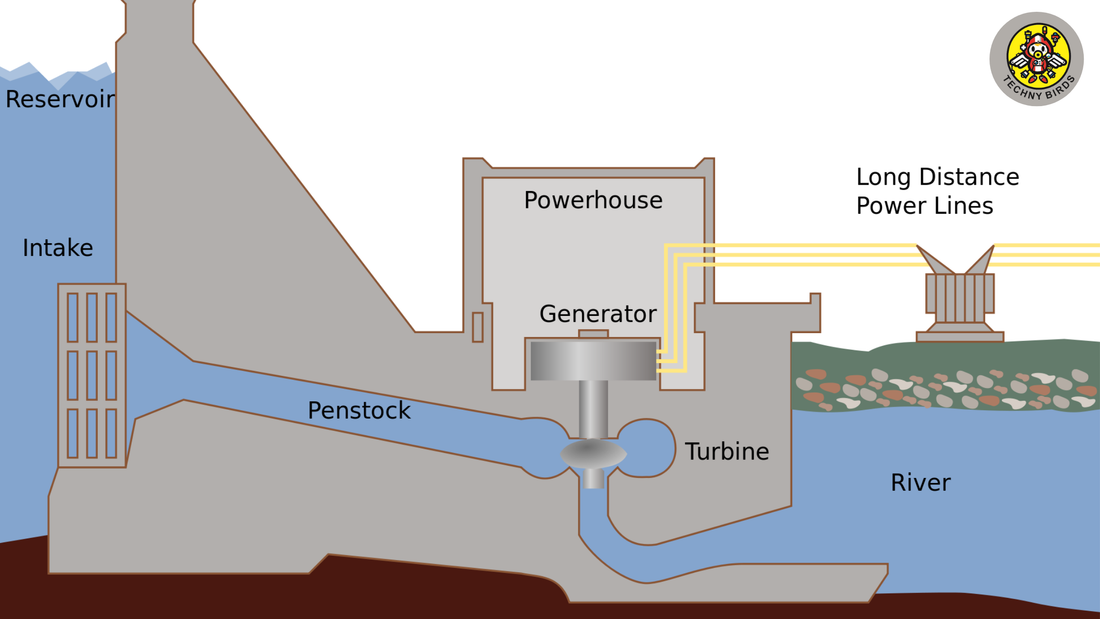
Principles of hydro-turbine: A STEM Learning
Share
History of water turbine
The human quest of Taming the power of flowing water has given birth to modern hydroelectric turbines .it all started with grinding grains with river power in ancient times.
It all started with faraday`s electric induction, which shows that electric current can be generated with the help of magnet and used for different beneficial uses.
On January 6, 1841, François Nollet got a patent on a permanent magnet electric generator.Which can be run on gas or steam engine.
An increase in electricity demand, which was beyond the capacity of the batteries has also led to the discovery of hydro turbines.
It was immediately conceived that water flow can also be used for the generation of electricity
Which led to the design of hydro turbines at water reservoirs on rivers.
Hydroelectric Turbine toy: A STEM Learning The emerging trend of new-age toys is
Ever wondered how the bulb glows in your home. Electricity has enormous power; it can run your ACs Fan and other stuff of your convenience. We must try to find out the source of this powerful energy. Hydroelectricity is one of the major sources of electricity, which is produced by Gravity dams on the river. This toy is the best to demonstrate how a water turbine works. A well-structured lesson plan can be made around this toy. Where a child can get acquainted with different parts of the hydro turbine. Then other questions can be formed on how it generates electricity and A live demonstration can be given how the amount generation of electricity changes when the height of the Waterhead is changed. Children can be asked to experiment with the relationship between the height of water and electricity generation. This is how the best educational and learning toy works. Water turbine videos on YouTube can also be viewed in the product section.
The history of water turbines draws their lineage from water mills, this is the time when humans have started harnessing the power of flowing water. In due course of time men learned and made dams to arrest the potential energy of water. This water turbine coupled with dynamo.it is a perfectly suitable kit for educational and learning toys.
A teacher can arrange classroom sessions on the following topics.
Parts of the water turbine:
Propeller blades are the main part of the hydroelectric turbine and a shaft.
There are buckets on the blade. Another important part is the electricity generator or dynamo which we will discuss in following paragraph.
How dynamo works
This device is based on the principle of magnetic induction. Where a conductor moves in a magnetic field and the current is generated. This principle is so widely used in motors and in many forms. When input is kinetic energy then this device produces current but it produces kinetic energy when current is given as input. This current is further used for different purposes in the modern world.
How water turbine works:
A turbine is a machine that uses power of water to rotate its blades.
There are two main types of hydro turbines: impulse and reaction. The type of hydropower turbine selected for a project is based on the height of standing water—referred to as "head"—and the flow,
A reaction turbine develops power from the combined action of pressure and moving water.
The impulse turbine generally uses the velocity of the water to move the runner and discharges to atmospheric pressure.
Types and forms of energy
Any hydro turbine changes the potential energy of water into electric energy.
The propeller part changes potential energy in kinetic energy then this energy is further changed into electric energy with the help of a dynamo. This is connected through the shaft.
Hydro turbines have an environment-friendly design
In the modern world, turbines are being used extensively, Children can be shared with some interesting following facts:
Most of the hydroelectric power station is made on dams. These dams serve dual purpose of irrigation as well as power generation.
Brazil has a significant amount of river network with considerable slopes to generate hydroelectric power. Another country that generates a large amount of hydroelectricity is Norway. These countries generate about 85% of electricity for their needs.
The united states of America have more thang 2000 hydroelectric power plants.
China has realized the potential of hydroelectric power plants and made the largest dam and hydroelectric power plants in the world. These three Gorges Dam in China. It provides 22500 Megawatts of electricity.
